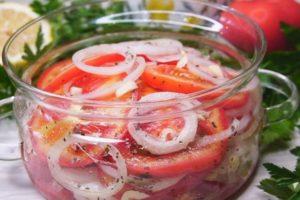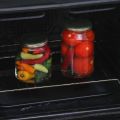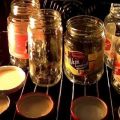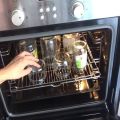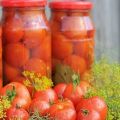Rules for sterilizing cans over the steam of a kettle when canning
In the old days, vegetables or fruits were salted in oak barrels, kept in a cold cellar and cellar. Now, not everyone has such an opportunity. To preserve the workpieces, canning is used. To prevent cans from being opened, they must be decontaminated. Sterilization is carried out in various ways. By choosing the appropriate method, the canning process will be quick and easy. Can jars be sterilized on a kettle and how? The following describes how to sterilize glass containers over a teapot.
Preparing the container and accessories
First, jars and lids must be prepared for sterilization in accordance with certain rules. The most suitable for conservation is such a container, which has already been used once, its glass is tempered. If you do have to use new cans, you need to keep them in hot water to get used to the high temperature.
When using glass containers, it is recommended to use colorless or with a bluish tint (or greenish tint) without cracks or chips. If the jars are too dirty, then they must be soaked in a solution of soda ash (1%), then thoroughly washed with baking soda, rinsed in plenty of running water, then rinsed again with boiled water.
Preparing lids
It is necessary to check whether the lids fit these containers, whether they are tightly closed. When using screwed tin lids, be sure to check that they are tight. To do this, pour water into the jar, screw the lid tightly, turn it over and shake it. If it lets water through, it will be visible. You also need to check the elastic bands to the metal covers so that they fit perfectly.

Among the tin can be covers with rusty spots, scratches, concavities. Such defective samples with damage are not suitable for rolling in the winter.
Glass and tin lids, corks must be sterilized immediately before seaming.
Sterilizing cans over steam
To sterilize a glass container, you can use the steam from the kettle, placing it with the neck over the boiling kettle. This grandmother's way has been used for a long time. To do this, pour water into the kettle, bring to a boil. Then a cleanly washed half-liter or one-liter jar is placed on its spout, the heat is reduced to medium.
Thus, they keep a half-liter jar for a couple for 10 minutes, a liter jar for 15, a three-liter jar for 20 minutes.
It is convenient to sterilize three-liter jars on the teapot itself, by removing the lid and installing with the neck. First you need to check whether the diameter of the neck of the glass container fits the kettle. A small steamed jar can be sterilized by placing it on a pusher in a teapot.
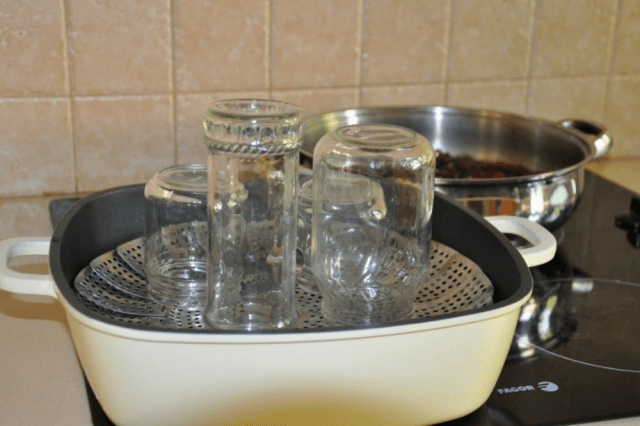
When preserving, care must be taken that there are no small children nearby.
Pros and cons of the method
The grandmother's method is simple and accessible. There is a kettle and a stove with water in any home, so everyone can implement this method.
The downside is that with this method, you can steam sterilize a small amount of glass containers at a time (1-2 pcs).
In some cases, this is a good option. Let's say there are few berries or vegetables at the moment, and the desire to roll them up without waiting for a new batch. The raw materials for preservation can go bad while you wait for the fresh berries to ripen.
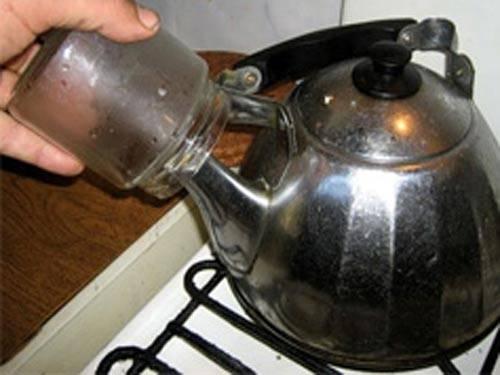
Which kettles are suitable?
For boiling water for making tea, coffee, modern manufacturers offer different types of kettles. Cast kettles are the most ancient, suitable for long boiling on a gas and electric stove, as well as on a stove. They have a thick bottom, the case is aluminum, ceramic, enamel or stainless steel.
Important! Jars cannot be sterilized on kettles with a closed heating element.
It is very convenient to use cast teapots for sterilization. They are durable, they have a large capacity (up to 3 liters), the water will not boil away.

How to sterilize jars with boiling water from a kettle?
Glass containers sometimes do not require long sterilization when vegetables need to be closed for a short time.
In such cases, use the scalding method.
- Place the required amount of containers in a colander or sieve.
- Then pour over boiling water from a kettle.
- Spread the processed container on a clean, dry towel.
The crockery is ready.
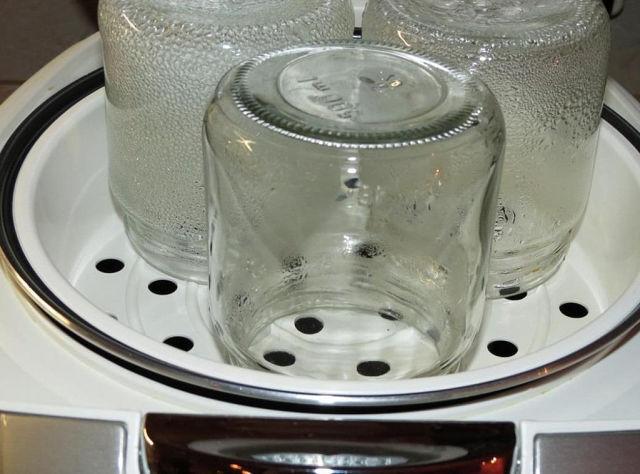
Sterilization safety measures
To avoid accidents during sterilization, you must follow the safety rules:
- you cannot take hot cans without kitchen gloves;
- utensils for sterilization must be intact, handles must be intact.
Do not rinse glass containers with cooled boiled water, it may burst. Sterilization of canning jars is a simple but very important process that requires compliance with the rules of disinfection.
